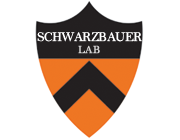Fibronectin matrix assembly is essential for cell condensation during chondrogenesis.
Type
Mesenchymal cell condensation is the initiating event in endochondral bone formation. Cell condensation is followed by differentiation into chondrocytes, which is accompanied by induction of chondrogenic gene expression. Gene mutations involved in chondrogenesis cause chondrodysplasias and other skeletal defects. Using mesenchymal stem cells (MSCs) in an in vitro chondrogenesis assay, we found that knockdown of the diastrophic dysplasia (DTD) sulfate transporter (DTDST, also known as SLC26A2), which is required for normal cartilage development, blocked cell condensation and caused a significant reduction in fibronectin matrix. Knockdown of fibronectin with small interfering RNAs (siRNAs) also blocked condensation. Fibrillar fibronectin matrix was detected prior to cell condensation, and its levels increased during and after condensation. Inhibition of fibronectin matrix assembly by use of the functional upstream domain (FUD) of adhesin F1 from Streptococcus pyogenes prevented cell condensation by MSCs and also by the chondrogenic cell line ATDC5. Our data show that cell condensation and induction of chondrogenesis depend on fibronectin matrix assembly and DTDST, and indicate that this transporter is required earlier in chondrogenesis than previously appreciated. They also raise the possibility that certain of the skeletal defects in DTD patients might derive from the link between DTDST, fibronectin matrix and condensation.

